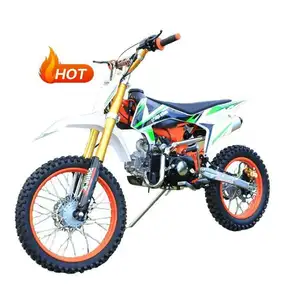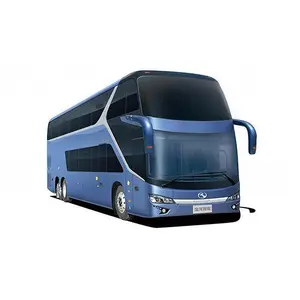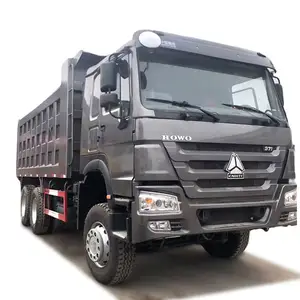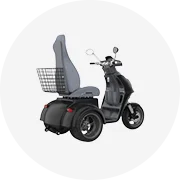Phổ biến trong ngành của bạn






Cammus Racing Simulator Phụ Kiện F1 Trò Chơi Buồng Lái Ghế Khung Nhôm Chơi Game Ghế Với Màn Hình Chỉ Đạo Wheel Đứng
36,00 US$ - 2.200,00 US$
Đơn hàng tối thiểu: 1 Bộ
Vận chuyển mỗi chiếc: 47,45 US$







Ghế Xe Van Sang Trọng Sửa Đổi Ô Tô Mới Nhất 2023 Cho Benz Alphard Ghế Tựa VIP Thí Điểm Điện Có Màn Hình Cảm Ứng Ghế Xe Tùy Chỉnh
888,00 US$ - 1.299,00 US$
Đơn hàng tối thiểu: 1 Bộ
Vận chuyển mỗi chiếc: 408,95 US$







Nhà Máy Trực Tiếp Cung Cấp Ghế Xe Ghế Vip Sang Trọng Van Nội Thất Với 3 Năm Bảo Hành
600,00 US$ - 2.000,00 US$
Đơn hàng tối thiểu: 1 Cái







Cho Land Cruiser 2008-2021 Lc200 Nâng Cấp 2022 LC 300 Sửa Đổi Nội Thất Nội Thất Kit + Tấm Cửa + Ghế Nâng Cấp Bộ Hoàn Chỉnh
658,00 US$ - 3.942,00 US$
Đơn hàng tối thiểu: 1 Bộ
Vận chuyển mỗi chiếc: 3.410,44 US$





Cá nhân thể thao phong cách cho TOYOTA fortux Hilux VIGO Revo Land Cruiser Prado F70 lc150 lc200 sợi carbon chỉ đạo bánh xe
240,00 US$ - 380,00 US$
Đơn hàng tối thiểu: 1 Hộp
Vận chuyển mỗi chiếc: 30,08 US$







Thiết Kế Mới Có Thể Điều Chỉnh Thể Thao Phong Cách Chuyên Nghiệp Phổ Biến Ghế Phụ Kiện Xe Ô Tô Ghế Đua
60,00 US$ - 70,00 US$
Đơn hàng tối thiểu: 50 Cái






Cao trở lại Wrangler TJ ghế trước 1997 2006 Jeep ngả sửa đổi ghế xe trượt phổ Hot Bán Racing
70,00 US$ - 78,00 US$
Đơn hàng tối thiểu: 100 Cái
Vận chuyển mỗi chiếc: 106,26 US$

Tùy chỉnh nhà máy trực tiếp Heavy Duty Genesis Coupe Jeep Racing Seat
105,54 US$ - 107,00 US$
Đơn hàng tối thiểu: 160 Cái





2024 thiết kế mới màu đen màu xanh đỏ da lộn sửa đổi ghế đua với đôi trượt phổ quát ghế xe phong cách ghế văn phòng
550,00 US$ - 580,00 US$
Đơn hàng tối thiểu: 10 Bộ






Thiết Kế Mới Màu Đen Màu Xanh Đỏ Da Lộn Sửa Đổi Racing Seat Với Đôi Trượt Phổ Xe Ghế Phong Cách Ghế Văn Phòng
139,00 US$ - 150,00 US$
Đơn hàng tối thiểu: 300 Bộ






Eddystar thấp ghế bên núi tùy chỉnh màu đen PU da đua ghế Ajustable đua xe Ghế
149,00 US$ - 199,00 US$
Đơn hàng tối thiểu: 2 Cái

















Ghế sau Jeep Wrangler TJ đơn điều chỉnh năm 1997-2006 trượt kích thước lớn đua ghế phổ
70,00 US$ - 78,00 US$
Đơn hàng tối thiểu: 100 Cái
Vận chuyển mỗi chiếc: 110,47 US$






Điều Chỉnh Sport Car Seat Organizer Cushion Thuyền Kim Loại Mềm Memory Foam PVC Da Racing Seat
65,00 US$ - 72,00 US$
Đơn hàng tối thiểu: 1 Cái






Xe ghế Jeep Wrangler TJ ghế trước reclinable điều chỉnh thanh trượt kích thước lớn đua ghế Breathable PU xe
70,00 US$ - 78,00 US$
Đơn hàng tối thiểu: 100 Cái
Vận chuyển mỗi chiếc: 91,74 US$






JIABEIR Ghế Lái Xe Hơi Làm Mát 1054 Đệm Xe Hơi Thể Thao Điều Chỉnh Được Bằng Da Ghế Đua Mô Phỏng Bán Sỉ
50,00 US$ - 80,00 US$
Đơn hàng tối thiểu: 10 Cái












Cá nhân bọc du lịch sẵn sàng bảo vệ bao gồm chỗ ngồi trong máy bay, nhà hàng, giao thông công cộng

0,06 US$ - 0,10 US$
Đơn hàng tối thiểu: 1000 Cái
Vận chuyển mỗi chiếc: 0,05 US$






Chất Lượng Cao Dùng Một Lần Pe Nhựa Xe Bao Gồm Chỗ Ngồi Cho Ghế Bảo Vệ
0,02 US$
Đơn hàng tối thiểu: 10000 Cái






Nhà Máy Trung Quốc Cung Cấp Chính Xác Gr.5 Titanium Van Người Giữ Cho Đua Ô Tô Và Xe Gắn Máy
1,00 US$ - 5,00 US$
Đơn hàng tối thiểu: 50 Cái






Mesorock Chất lượng cao da phổ xô xe Ghế bìa thể thao phù hợp cho xe ô tô xe tải Jeep van SUV Pickup xô ghế bao gồm
14,00 US$ - 14,20 US$
Đơn hàng tối thiểu: 300 Cái
Vận chuyển mỗi chiếc: 2,33 US$






Jmen Thanh Gia Cố & Hỗ Trợ Tản Nhiệt Tùy Chỉnh Cho BMW 4 Series F32 G22 M4 Sport Racing Phụ Tùng Thân Cản Xe Hơi
8,80 US$ - 50,00 US$
Đơn hàng tối thiểu: 10 Cái






Có thể điều chỉnh đua ghế TRƯỢT KÉP núi khung đường sắt cho Jeep Wrangler YJ 91-95
26,47 US$ - 36,47 US$
Đơn hàng tối thiểu: 200 Cái
Vận chuyển mỗi chiếc: 17,62 US$






Xô Sợi Thủy Tinh Chỗ Ngồi Thể Thao Sợi Carbon Ghế Xe Mềm Đệm Thuyền Bộ Nhớ Bọt Vải Đua Ghế
Sẵn sàng vận chuyển
69,80 US$ - 72,00 US$
Đơn hàng tối thiểu: 10 Cái
Vận chuyển mỗi chiếc: 94,90 US$






Không Thấm Nước Phía Sau Xe Chỗ Ngồi Bìa-Protector/Nhà Sản Xuất Giá Xe Chỗ Ngồi Bao Gồm Trong Chất Liệu Nylon
1,80 US$ - 2,10 US$
Đơn hàng tối thiểu: 10 Cái






Nhà Máy Trung Quốc Cung Cấp Chính Xác Gr.5 Titanium Van Retainers Cho Racing Ô Tô Và Xe Máy NO 0000174
1,00 US$ - 5,00 US$
Đơn hàng tối thiểu: 50 Cái






Bọc Ghế Xe Hơi Pe Chống Thấm Nước Dùng Một Lần Bằng Nhựa PE Trong Suốt Tùy Chỉnh Thông Dụng
0,19 US$ - 0,20 US$
Đơn hàng tối thiểu: 100000 Cái






Jmen RX-7 Cho MAZDA RX7 RX-8 RX8 Thanh Gia Cố & Hỗ Trợ Tản Nhiệt Xe Đua Thể Thao Phụ Tùng Thân Cản Xe Hơi Tác Động
8,80 US$ - 50,00 US$
Đơn hàng tối thiểu: 10 Cái






Tài Xế Xe Ghế Da Thể Thao Điều Chỉnh Xe Đệm Chơi Game Thoải Mái Kim Loại Bộ Nhớ Bọt Racing Seat
Sẵn sàng vận chuyển
56,80 US$ - 60,00 US$
Đơn hàng tối thiểu: 10 Cái
Vận chuyển mỗi chiếc: 114,73 US$












Jntitanti nón Ghế Bạc Hollow gr.5 Titan Hợp Kim Bánh xe Nut khóa M14 * 1.5*35 mét cho xe jeep, Land Rover, Tesla, Cherokee, báo đốm Mỹ, VW
10,00 US$ - 16,30 US$
Đơn hàng tối thiểu: 20 Bộ
Vận chuyển mỗi chiếc: 2,35 US$






JIABEIR Ghế Đua Sim Chơi Game Mô Phỏng Thể Thao Bằng Da Chất Lượng Cao Điều Chỉnh Được Cho Xe Hơi Trình Điều Khiển Thông Dụng 1095
50,00 US$ - 80,00 US$
Đơn hàng tối thiểu: 10 Cái






Jntitanti Hot Bán Tùy Chỉnh Màu Cone Ghế Gr.5 Titan Racing Bánh Xe Nuts Bu Lông M14x1.5mm Cho Jeep Land Rover Tesla Cherokee
Sẵn sàng vận chuyển
7,00 US$ - 12,00 US$
Đơn hàng tối thiểu: 20 Cái
Vận chuyển mỗi chiếc: 2,35 US$






Hrmin nón ghế gr.5 hợp kim titan Knurled phụ tùng ô tô Titan vít titan bánh xe Nut khóa Nut Lug Nut M14 * 1.5*35 cho đua xe
Sẵn sàng vận chuyển
5,00 US$ - 9,00 US$
Đơn hàng tối thiểu: 20 Cái
Vận chuyển mỗi chiếc: 2,87 US$






Tùy Chỉnh Phong Cách Màu Sắc Dữ Liệu Giả Mạo Bánh Xe Duy Nhất Off-Road Mảnh 18 19 20 21 22 23-Inch Racing Xe Vành Hợp Kim Cho Jeep X5
170,00 US$ - 210,00 US$
Đơn hàng tối thiểu: 4 Cái






Dùng Một Lần Phổ PE Nhựa Trong Suốt Car Seat Covers Đối Với Seat Bảo Vệ
0,13 US$ - 0,15 US$
Đơn hàng tối thiểu: 10000 Cái
Vận chuyển mỗi chiếc: 0,20 US$






Chất Lượng Tốt Trẻ Em Pin Hoạt Động Đi Xe Điện Trẻ Em Đi Xe Trên Động Cơ Đồ Chơi Xe Ô Tô Bé Có Thể Ngồi Thân Cây Jeep Hai Chỗ Ngồi Cho Bán
56,00 US$ - 58,80 US$
Đơn hàng tối thiểu: 1 Cái
Các danh mục hàng đầu
Giới thiệu về ghế đua cho xe jeep
Alibaba.com có một bộ sưu tập toàn diện về chất lượng cao, độ bền và tình trạng mới ghế đua cho xe jeep. sản phẩm và nguồn cung cấp cho khách hàng để lấy với giá cả phải chăng nhất. Toàn bộ bộ sưu tập các sản phẩm được cung cấp trên trang web là các sản phẩm đã qua sử dụng trong tình trạng nguyên sơ và việc mua chúng hoàn toàn xứng đáng từng xu. Cho dù ai đó muốn mua xe cộ, đồ điện tử và thậm chí cả đồ uống cứng như rượu whisky, sâm panh, người ta có thể tìm thấy tất cả các loại sản phẩm trên trang web với các giao dịch cạnh tranh. Những ghế đua cho xe jeep này. nguồn cung cấp và sản phẩm được kiểm tra cẩn thận để có chất lượng hoàn hảo và tất cả đều ở trong điều kiện hoạt động hoàn hảo.
Bộ sưu tập đa dạng của loại cao cấp ghế đua cho xe jeep. các sản phẩm có sẵn trên trang web được nhập khẩu từ nhiều nơi khác nhau trên toàn cầu và được kiểm tra bởi các kỹ thuật viên chuyên nghiệp. Những sản phẩm này bao gồm các sản phẩm đã qua sử dụng hoặc đồ cũ được bán với giá tiết kiệm. Người ta cũng có thể lấy các thiết bị, sản phẩm và phương tiện cao cấp, chọn từ nhiều loại sản phẩm có thể truy cập trên trang web. Nhiều sản phẩm trong số này đi kèm với sự đảm bảo của nhà cung cấp và thương mại và có thể tuân theo các điều khoản và điều kiện của người bán.
Tại Alibaba.com, các danh mục riêng biệt của ghế đua cho xe jeep. vật tư và sản phẩm được kiểm tra cẩn thận để đảm bảo phần cứng bên trong trong trường hợp thiết bị điện tử và xe ở tình trạng tốt nhất. Trong trường hợp đồ uống như rượu whisky lưu niệm và đồ uống khác, chất lượng và thời hạn sử dụng của sản phẩm được kiểm tra kỹ lưỡng. Đối với ô tô, chất lượng động cơ, bánh răng an toàn và điều kiện lái xe được kiểm tra nghiêm ngặt để tránh sai sót. Người ta cũng có thể chọn những chiếc đồng hồ sang trọng trong tình trạng tốt nhất và mang lại giá trị tốt nhất cho đồng tiền.
Xem nhiều đồng hồ ghế đua cho xe jeep. phạm vi trên Alibaba.com và mua những sản phẩm này trong phạm vi ngân sách và khả năng chi trả. Những sản phẩm này dành cho mục đích sử dụng dành cho giới tính, và người ta cũng có thể tìm thấy các sản phẩm cho đồ trang trí nội thất, trẻ em và nhiều sản phẩm khác. Sản phẩm cũng được làm sạch, tráng và bảo dưỡng trước khi bán.
Bộ sưu tập đa dạng của loại cao cấp ghế đua cho xe jeep. các sản phẩm có sẵn trên trang web được nhập khẩu từ nhiều nơi khác nhau trên toàn cầu và được kiểm tra bởi các kỹ thuật viên chuyên nghiệp. Những sản phẩm này bao gồm các sản phẩm đã qua sử dụng hoặc đồ cũ được bán với giá tiết kiệm. Người ta cũng có thể lấy các thiết bị, sản phẩm và phương tiện cao cấp, chọn từ nhiều loại sản phẩm có thể truy cập trên trang web. Nhiều sản phẩm trong số này đi kèm với sự đảm bảo của nhà cung cấp và thương mại và có thể tuân theo các điều khoản và điều kiện của người bán.
Tại Alibaba.com, các danh mục riêng biệt của ghế đua cho xe jeep. vật tư và sản phẩm được kiểm tra cẩn thận để đảm bảo phần cứng bên trong trong trường hợp thiết bị điện tử và xe ở tình trạng tốt nhất. Trong trường hợp đồ uống như rượu whisky lưu niệm và đồ uống khác, chất lượng và thời hạn sử dụng của sản phẩm được kiểm tra kỹ lưỡng. Đối với ô tô, chất lượng động cơ, bánh răng an toàn và điều kiện lái xe được kiểm tra nghiêm ngặt để tránh sai sót. Người ta cũng có thể chọn những chiếc đồng hồ sang trọng trong tình trạng tốt nhất và mang lại giá trị tốt nhất cho đồng tiền.
Xem nhiều đồng hồ ghế đua cho xe jeep. phạm vi trên Alibaba.com và mua những sản phẩm này trong phạm vi ngân sách và khả năng chi trả. Những sản phẩm này dành cho mục đích sử dụng dành cho giới tính, và người ta cũng có thể tìm thấy các sản phẩm cho đồ trang trí nội thất, trẻ em và nhiều sản phẩm khác. Sản phẩm cũng được làm sạch, tráng và bảo dưỡng trước khi bán.
































